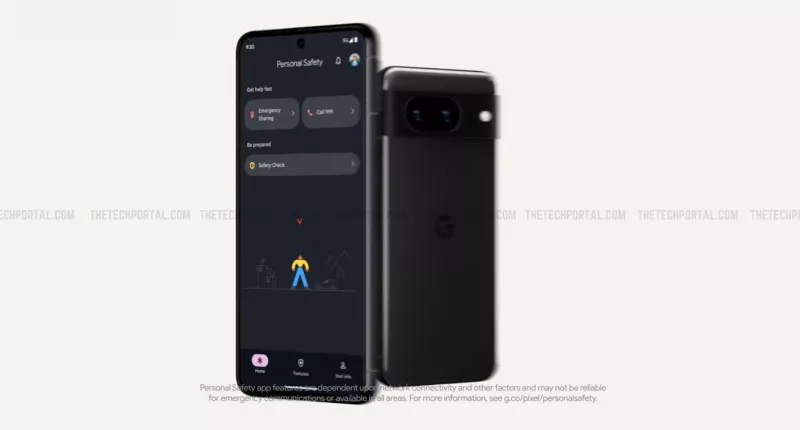Google’s flagship smartphone lineup — and one of its better performing hardware products — the Pixel lineup is getting two new devices today. Announced via an official blog post, tech titan Google has officially revealed the Pixel 8 and Pixel 8 Pro. As has been the case for a while, the new line-up is impressive and perhaps the most balanced of smartphones in the Android segment. Once again, these new pixels will be Android’s best bet against the iPhones.
With all the fuss around AI and generative AI in recent months, it is natural that Google’s latest smartphones are “built with AI as the centre.” The Pixel 8 Pro is set to be the first device to run Google’s generative AI foundational models in a distilled version on the device, and will be powered by the custom-built Tensor G3 AI chip.
Google has incorporated AI enhancements into its software, particularly within Google Photos. Notable features include “Best Take,” which allows users to select the best faces from a series of photos for a perfect group shot. “Audio Magic Eraser” is designed to isolate distracting sounds in videos, making post-production editing easier. While it’s currently in beta, the Magic Editor tool aims to make photo adjustments more intuitive and personalized, and to streamline photo editing. These software features are aimed at enhancing the overall photography and video experience for users. Interested users can pre-order both devices today – the Pixel 8 starts at $699, while the Pixel 8 Pro starts at $999, and they will be available for purchase starting October 12, 2023.
Google Assistant also receives its own set of AI-driven updates, including improved speech understanding. It can now recognize pauses and fillers like “um,” making conversations with Assistant feel more natural. Additionally, Google Assistant can translate webpages and read them aloud, while Call Screen will help deal with the much-dreaded spam calls by engaging calls from unknown numbers with a natural-sounding voice. Another of the most groundbreaking announcements surrounding the Pixel 8 and Pixel 8 Pro is Google’s commitment to providing seven years of software support for these devices. This includes Android OS upgrades, security updates, and regular feature drops. This development rivals the longevity offered by Apple for its iPhones, while addressing a critical concern for smartphone users – how long their device will remain relevant. However, the big question is whether Google can deliver on this promise consistently.
The Pixel 8 Pro is Google’s flagship offering and comes with some noteworthy features. The design follows the tradition of previous Pixel phones but includes refinements like streamlined camera cutouts, rounded corners, and a familiar yet sophisticated appearance. Under the hood, the Pixel 8 Pro boasts Google’s third-generation custom chipset, the Tensor G3, which is responsible for powering various AI features throughout the device. While Google emphasizes AI-driven enhancements, it doesn’t make specific claims regarding battery efficiency or heat management, leaving users eager to see real-world performance.
The device features a matte finish on the back glass panel, which Google offers in three distinct colors: obsidian black, porcelain, and a light blue “bay.” These design choices aim to provide users with a premium feel and appearance. While the Pixel 8 Pro comes with an LTPO display, branded as “Super Actua,” offering variable refresh rates from 1Hz to 120Hz, the Pixel 8 retains a flat screen. The move away from curved edges in the Pro model could be a welcome change for users who prefer a fully flat screen.
The Pixel 8 has a 6.2-inch Actua display, while the Pixel 8 Pro has a 6.7-inch Super Actua display. Notably, the Pixel 8 Pro claims a peak brightness of 2,400 nits, making it remarkably bright under certain conditions, particularly direct sunlight. This brightness level surpasses that of competing devices like the iPhone 15 Pro and Pro Max, which reach 2,000 nits in high brightness mode. One of the most unexpected features in the Pixel 8 Pro is the inclusion of a temperature sensor. This sensor allows users to measure the temperature of various objects, including beverages and surfaces. Google has even applied to the FDA for approval to use this sensor for body temperature sensing.
Google has consistently impressed users with its camera technology, and the Pixel 8 Pro continues this trend. It features a 50-megapixel main camera sensor with a brighter f/1.7 lens, promising improved low-light performance. The ultrawide camera, now capable of focusing as close as 2cm in macro mode, gets a higher-resolution 48-megapixel sensor. The front-facing camera, at 10.5 megapixels, also benefits from autofocus. The Pixel 8 has the same updated main camera, along with a new ultrawide lens that enables Macro Focus. What’s more, the Pixel 8 Pro offers pro-level camera controls, allowing users to adjust settings like focus, shutter speed, and lens selection, along with the ability to capture 50-megapixel JPEG or RAW images directly from the native camera app. These features empower photography enthusiasts with more creative control.
